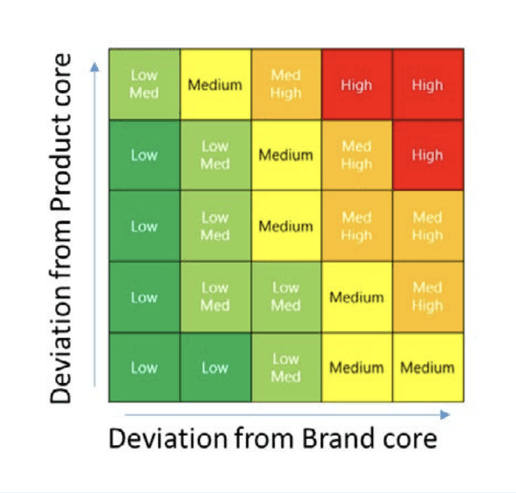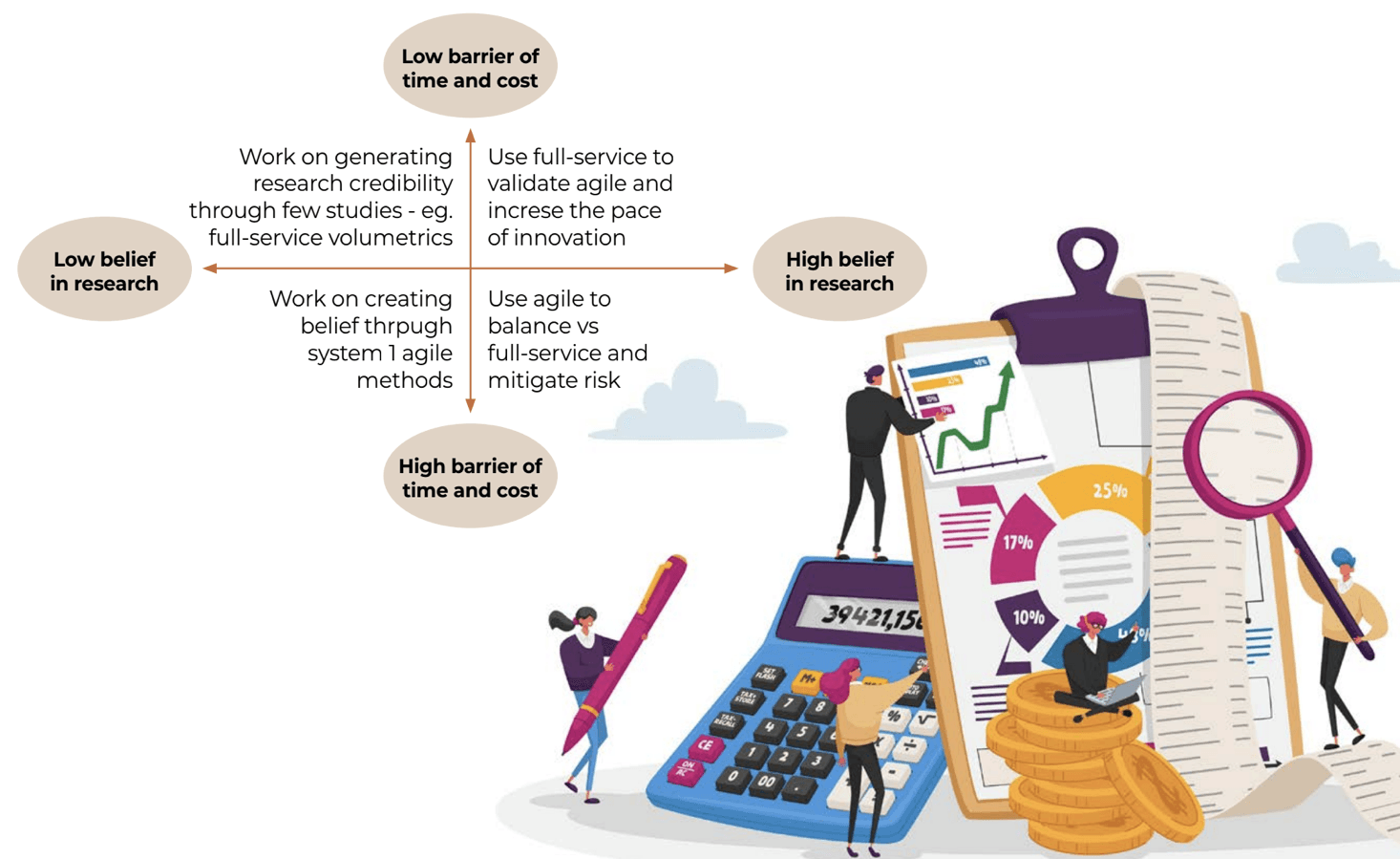Finding the right balancebetween full service solutions and agile research methodologies
Head - Consumer Insights, Dabur India Limited
There is a famous principle that goes like “you can always get to choose two out of three between Speed, Quality and Cost”. You can never get all three – and while quality remains a non-negotiable, market research struggles to create impact because Speed and Cost remain inversely proportional. However, with new tech emerging – it is now indeed becoming possible to deliver all three together and hence through agility create substantial business impact. However, wherever it is not yet possible, it becomes critical and imperative also for businesses to assess risks and really make the choices between Speed and Cost.
Tech will come to play very important role in the industry going forward. I foresee that we will move from too little data to too much data – so much so that we won’t know how to handle such large authentic data sets – and what patterns to draw from it. This will be possible because of the increasing ecomm and social media penetration. Authentic data will keep getting collected without even mounting any surveys.
With such real time accurate and actionable data, I foresee market research continuing to be at the strategy table for most businesses. It would be critical for market research industry to keep pace with the evolving consumer space to ensure this happens.
First things first, we need to understand where is it and in what cases do we need to go with agile research and where do we go with full service solutions.
The first thing to establish is the assessment of risk. Every initiative can be assessed on the risk you are taking – for eg. if an NPD is going to require Capex, it is a high risk while if it is off the shelf, it is lower risk. If it’s an e-comm launch, it is a lower risk, but if it’s a general trade launch requiring advertising support, then it’s a high risk. One could develop multiple vectors like this with different weightages and assign a risk score to the initiative and accordingly decide between agile and full service research model. One more vector could be how far away from the brand core is your brand extension.

Coming to agile research – you don’t want to get into normative models which have their black boxes and take their own time and have a solid protocol in place and you cannot really deviate from the question – which is supposed to be asked in the exact same way in India or Singapore or USA. It increases cost and timeline and also is difficult to explain and promote research in the organization. Besides, increasingly, in countries like India where there is very high top-boxing, you would mostly end up failing even if you have a great concept passing 90% PI – which often is difficult to comprehend and explain to the leadership.
Taking it further, wherever comparative is possible, we should ideally do that or where it is not, best is to adopt a System 1 approach – which is more reflective of real life scenario and subconscious everyday decision making vs effortful, claimed, thought –through responses. Of course, with ecomm, developing such models have become possible easily. For Example, we were planning to launch a skin care face wash and wanted to understand trial potentials. We worked with an agency and evaluated two different brand names and A+content in a setting which was exactly the same as an Amazon market place. This was simulated test marketing as real as it can get. Our success criteria was not PI but actual “add to cart” We also figured which elements of the A+ content were the consumers spending more time on, what was liked more, what was not liked and it helped us understand diagnostics as well.
So you see, one of the critiques of agile , system 1 research is that it might give you answers to what but not why – which in this we felt was not the case. We got very rich diganostics and we were able to assess a ballpark volume for the initiative as well – which helped us plan better. This was something that was done for the first time in India and we also were the finalists for the best use of technology award in market research by MRSI – Market Research Society of India. I envisage that in the future, it might be even possible that the companies actually launch two different brands, concepts – maybe in limited pin codes and assess which A+ content is working – with actual data – before commercializing it.
System 1 has now evolved to the extent that now it is possible to actually map the areas in the brain which light up by exposure to the stimulus and assess how that stimulus is faring.
This has reached a very advanced stage. With text and video analytics, a huge number of videos and conversations happening in your category of interest can be compiled in meaningful patterns. Similarly, robust AI models are coming up for concept to copy testing.
Another popular agile research is developing and tapping into consumer communities. These communities could also be of experts as well as employees – which enable you to get quick feedback on early stage ideas and prototypes. As we navigate on adopting agile research methodologies, it is important to assess where your organization currently is and accordingly experiment with new age methodologies.

I think that we can map organizations on this 2 by 2 kind of matrix where one axis on how much do they believe in research – or let’s say what is the capacity to mentally invest in research while the other axis represents the barrier of time and cost. Depending on where your organization lies, you would need to bet with agile vs full service solutions accordingly. For example in the bottom left quadrant lie the companies which have a high belief in research but also are the ones which thrive on speed and don’t have the patience required for full service solution. Here the need for balance would be maximum. While on the upper left quadrant, where we have companies which have a high belief in research and also have very highly developed processes and stage gates and are willing to get it right the first time – these companies present the best chance to generate validations for agile research along with full service solutions.

